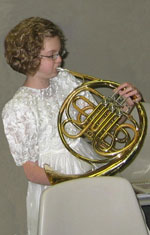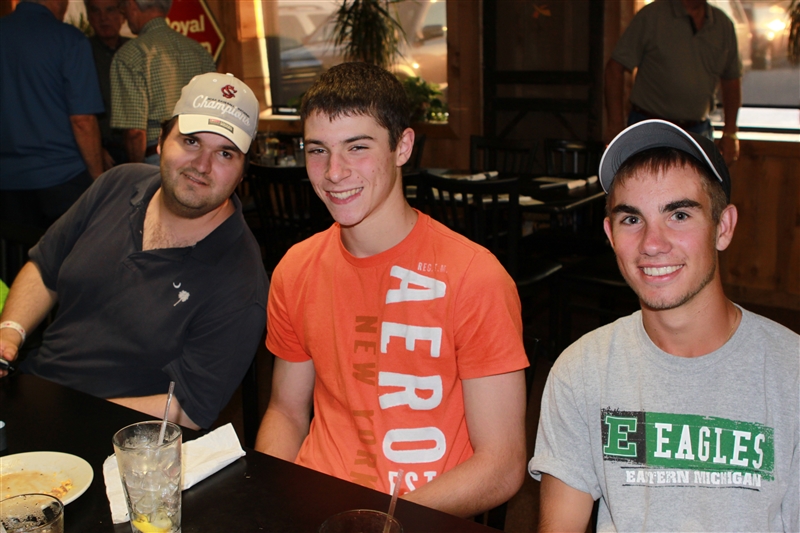Choosing a Musical Instrument – A Music Therapist’s Perspective
A mom asked music therapist Jeanne which instruments she recommends for her son who has hemiplegic cerebral palsy. Jeanne’s answers are below.
Why not look into percussion? The best part of it is that there are a variety of instruments involved, and most of them are on some sort of stand so that the player can go from one to another depending on the music. If your child has aphasia, can he match symbols with objects non verbally? He would work on this skill in this arena regardless. I like percussion because it offers a way to express the self more than anything else I have found.
I own a number of hand drums and other percussion instruments that I use in therapy sessions all the time. It doesn’t take much effort to learn to play the basics, but there is also great potential to do amazing things with the instruments with practice. It might also give him an opportunity to do something very unique-there are not many really good percussionists. There are, however, many drummers who play drum sets.
 Was he right hand dominant before surgery? What are his therapeutic goals? There are also many music books for piano with the left hand. In an orchestra, he could use a keyboard to simulate sounds not present. I had a great time in a youth symphony one year being that person. I got to be a bass, a harpsichord, sound effects, and lots of other stuff. For a beginner, it might give him a feel for whether he even likes the instrument. Marimba is a percussion instrument where players are actually taught to use a number of mallets in each hand. With one hand, he could play numbers of chords. With practice, he could get quite good and maneuver well with a number of mallets in one hand.
Was he right hand dominant before surgery? What are his therapeutic goals? There are also many music books for piano with the left hand. In an orchestra, he could use a keyboard to simulate sounds not present. I had a great time in a youth symphony one year being that person. I got to be a bass, a harpsichord, sound effects, and lots of other stuff. For a beginner, it might give him a feel for whether he even likes the instrument. Marimba is a percussion instrument where players are actually taught to use a number of mallets in each hand. With one hand, he could play numbers of chords. With practice, he could get quite good and maneuver well with a number of mallets in one hand.
You know, instruments can be adapted as well. Depending on your child’s motivation, you (or a music therapist or engineer) could construct an apparatus to hold any instrument. Some music therapists specialize in adaptive instruments/tools to adapt instruments. AMTA (The American Association for Music Therapy) may be able to provide you with a listing of people to contact if you want to go that route. I hope this helps! The key is to get creative and find out what your child is interested in. – Music Therapist, Jeanne
Adapting a Recorder for One Handed Play
Adapting a Recorder for a child with one hand
Parents Speak – Brass Instruments for Children With Hemiparesis
My 12 year old, with right hemiparesis, plays the baritone. It’s a good fit for him and he had a great time with it at band camp this summer. He’s now 1st chair out of 5 boys who play the baritone in his band. He plays with his left hand and rests it on his lap. – Jennifer
My son has right hemiplegia and plays the trumpet in the fifth grade music program. He has figured out a comfortable way to hold it with his right hand and the pushes the buttons with his left fingers. It’s the opposite of the typical way the trumpet is played. The trumpet is a good band instrument for beginners because many school programs have trumpts and they are often available to rent. His music teacher suggested trumpet over french horn to start because elementary schools typically don’t have french horns and they’re pretty big for a young kid. My son moved on to french horn last year and loves it. He still practices both instruments. – Tina
 My daughter is in high school and plays french horn. She has right hemiparesis and plays the mellophone in marching band. The fingering for the mellophone is the same as for the trumpet. She couldn’t hold the mellophone one-handed and play, so the local music store created a special harness. They bolted the curved back from an old metal folding chair to the drum harness and put a split piece of pvc pipe on the top of it to put the horn in. It’s adjustable, so will work for her as she gets taller. – Diane
My daughter is in high school and plays french horn. She has right hemiparesis and plays the mellophone in marching band. The fingering for the mellophone is the same as for the trumpet. She couldn’t hold the mellophone one-handed and play, so the local music store created a special harness. They bolted the curved back from an old metal folding chair to the drum harness and put a split piece of pvc pipe on the top of it to put the horn in. It’s adjustable, so will work for her as she gets taller. – Diane
Read more about Diane’s daughter’s band experiences
My son has right hemiplegia and he is seven years old. The trombone, in particular a Maynard Fergusen superbone, actually has valves for the player to use and the valves are played with the left hand not the right like other valve instruments. Other options might be like the trumpet using the left instead of the right to play the valves. My son had his stroke when he was 21 months old and now at age 7 his right hand is mainly a helper hand. – Sue
My 12 year old son who has right hemiparesis is playing the trombone. The music teacher simply moved the slide to the left side. – Sharon
My daughter, who has left hemiplegia, tried a variety of musical instruments. The trumpet wasn’t an option because her embrasure, the muscles in her face used for playing the instrument, wasn’t right. The trombone wasn’t the best choice because while whe could slide the slide with her unaffected arm, the affected arm was in a position that reinforced it’s spasticity. She decided to go with the euphonium, with is similar to a baritone. This instrument is played while sitting down and it stretches her affected arm in a useful manner, while leaving the other hand free to play the keys. She’s been playing for a few years in the school band and loves it. – Michael
Parents Speak -Playing Drums and Other Percussion Instruments
My daughter is taking drum lessons. She has use of her right hand, but not the left. There are rock drummers with one hand. I don’t expect her to become a rock drummer, but the injury to her happened as an infant and she became delayed in many ways because of the imbalance in her body. The rhythm and patterning, I believe, will help her. She told me after her lesson yesterday that she is now using both feet! There will have to be adjustment due to the slower response time on the left, but this was an advance for her. – Jennifer
The bass drum is a large drum, which can be played with one hand. For a concert, the drum sits on a stand. Marching with a bass drum may prove to be difficult for a child with hemiplegia, due to the weight of the drum and balance issues. One option is to sit it in a stand on the field so the player does not have to march. The glockenspiel is another one-handed instrument. The tenor drum requires two hands, but may be easier to play than the snare drum. – Deb
I think that reading drum music may be easier than reading music for other instruments because the drum music goes in a straight line across the page, denoting the rhythms. It doesn’t go up and down, showing different notes. This may be helpful for a child with hemiplegia who has a field cut or other vision differences. It is also notoriusly repetitive at those early stages. – Deb
Piano for Children With Hemiplegia
My daughter has right sided hemiparesis and enjoys playing the piano. She plays with one hand. Most one-handed piano music has been developed for the left hand and is rather advanced. Start with a basic piano book and simply play either the bass or treble clef lines of music. The music teacher and/or other students can accompany your child in a duet. Your child could also record herself playing one line and then accompany her recording. – Nancy
My daughter has an electronic keyboard which she plays with one hand, augmenting melody lines with programmed chords and rhythms. She assists with with some pretty cool computer software for composition and notation. She’s considering a career as a music therapist. – Michael
Musical Instrument Resources for Children With Hemiplegia or Hemiplegic Cerebral Palsy
Back to School – Musical Instruments for Kids with Hemiplegia
Playing Guitar with Adaptive Pick







